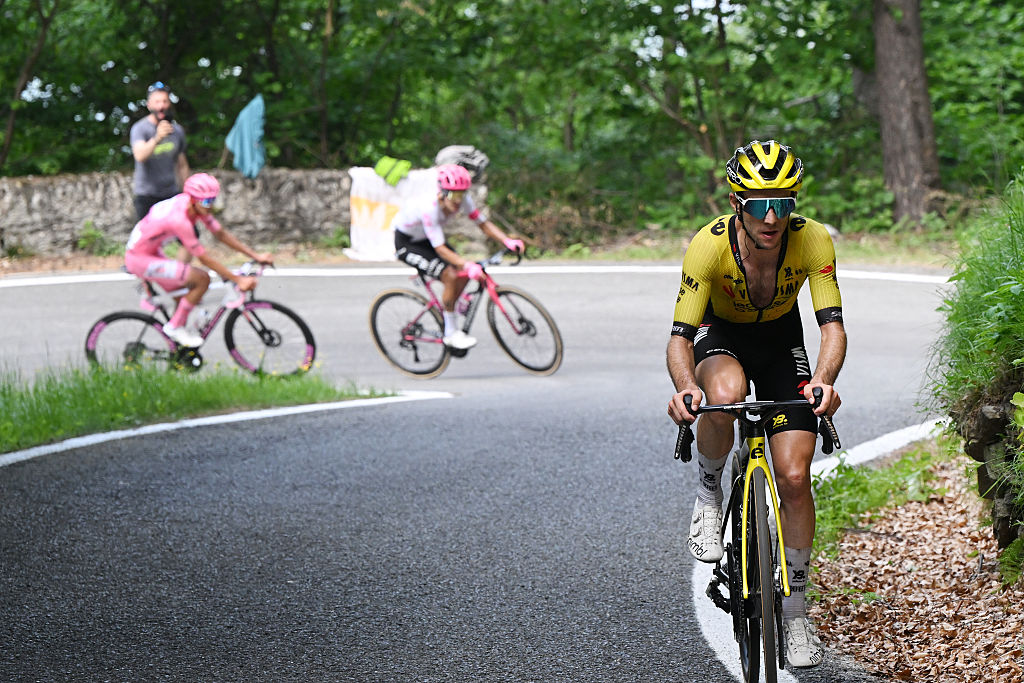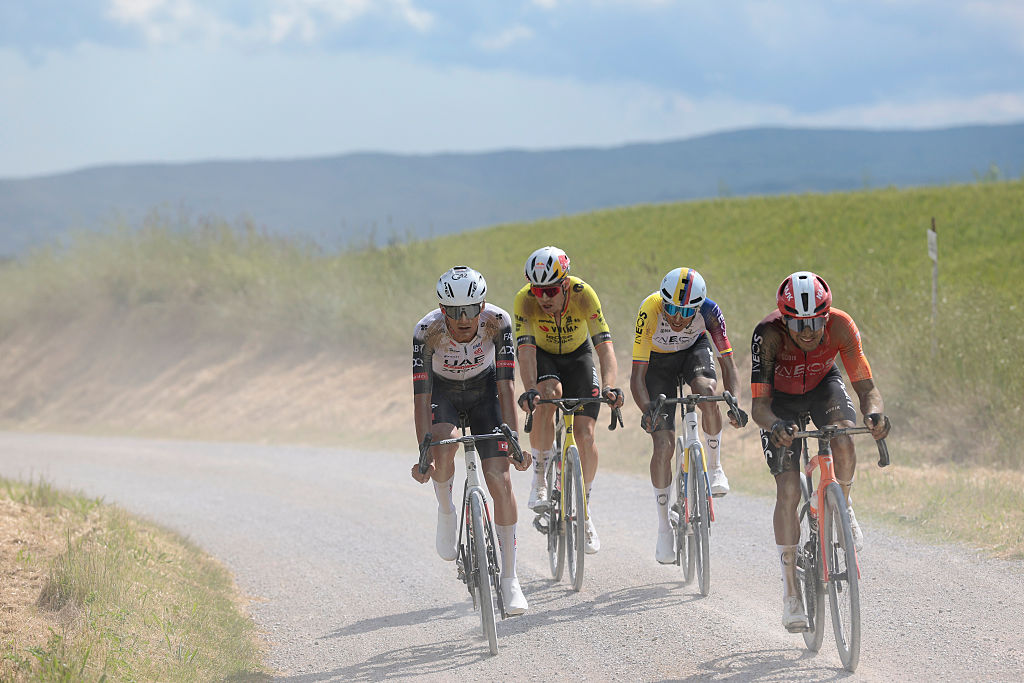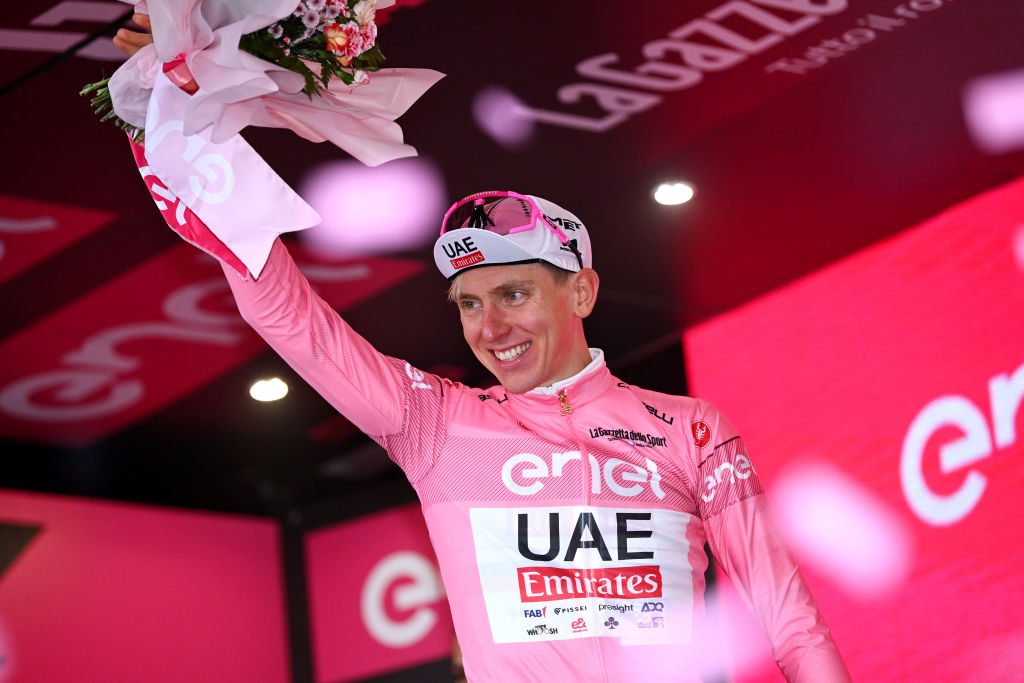I spent two weeks at the Giro d’Italia, and it made me excited about men’s cycling again
Unpredictable racing was a welcome change from the domination we've come to expect at the Classics and Tour de France

Let's start this with a disclaimer. I love cycling, I really do. Men's cycling, women's cycling, Grand Tours, Classics, random tiny races, I love it all, and you'll very rarely find me saying any given race or season is boring. In my view, there's always a story, an interesting angle, even if it's not the winner, and finding that is part of the challenge of being a cycling journalist.
But – and yes, there is a but – I also think it's fair to say that in the current era of cycling, a lot of the big men's races are lacking some sense of unpredictability. We have riders like Mathieu van der Poel and Tadej Pogačar who are in the peak of their careers, and are so strong that when they want to win a race, they often do. It's not unimpressive, but it's not always thrilling – certainly I have been missing some of the spark for some time.
I covered the Spring Classics earlier this year in Belgium, and whilst there were some exciting days – that Dwars door Vlaanderen finale was such a thriller, for example – there were also days where, when it came to the men's races, we almost already knew what stories we would write before the race had even finished, such was the inevitability of Van der Poel and Pogačar.
When I came to the Giro d'Italia this year, I thought it could be a bit more of the same. This time last year, I arrived in Italy at the same point – at the start of the second week – and the race was pretty much already decided. Tadej Pogačar had been in pink since the start, had a 2:40 lead, and looked unstoppable. As it turned out, he was, and he won by a huge margin. There were some great stages and stories, but as for following and reporting on the GC race, there was fairly little to be excited about.
And so as I made plans in the spring to head out to Pisa to join the race for its second two-thirds this year, there was part of me that thought this year's edition could be something of the same. No Pogačar to dominate, but it was going to be Primož Roglič vs Juan Ayuso by the time I arrived, wasn't it? Well, no, it wasn't.
Instead, we were treated to two weeks of a tense, hard to read, and climax-building GC battle, that saw intra-team friction, the big favourites fall away, and some gutsy riders step into their place and ultimately win the Giro. Pre-race, I never thought Simon Yates would be the rider who won in Rome, but being proved wrong was a privilege.
The thing that this Giro brought that maybe the Classics didn't, or the Tour hasn't in recent years, was that tension and thrill. Standing at the finish line, watching on the TVs set up for the media, we were all enthralled in what was happening on stages 16, 17, 19, 20 and beyond.
The latest race content, interviews, features, reviews and expert buying guides, direct to your inbox!
We weren't just waiting for the obvious winner to arrive; we were witnessing a real battle play out, and then, fuelled by excitement and adrenaline, speaking to all the key players to pick apart what had happened and why. It brought an excitement I haven't felt about the biggest men's races for quite a while.

Stage 20 was the biggest high of the race, and came close to the most exciting stage I've ever reported on – the final stage of the Tour de France Femmes last year. Of course, the Giro's climax wasn't quite as exciting as that race, which came down to seconds on the line, but it was a big fight on a big climb, where a rider who was not the favourite proved they were the strongest. As a journalist, telling stories like that will always be fun.
There is also, whether we like it or not, an undeniable romanticism in seeing an underdog or an athlete who has endured setbacks finally achieve their big win. We're told fairytales don't exist, and lots of athletes don't get that dream win, but a lot do, and that's why we love sport.
Simon Yates' win was the perfect example of that, the way he overcame the very climb that undid him in 2018 to win the Giro in 2025, and the way he just wept and wept at the finish. It was so different to when we see Van der Poel or Pogačar winning, and the emotion and the backstory absolutely added to the spectacle.
Even if Yates hadn't won, though, and it had been Isaac del Toro or Richard Carapaz, I'd still be feeling more excited than I have in a long time about Grand Tour racing (it's not just the patriotic Brit in me, I promise). What was exciting is that every rider in the top three had to fight the whole race, had to go on the attack, had to play the game. Even Del Toro, with his dominating UAE Team Emirates-XRG support squad, got stuck into the race.
The Finestre, with the gruelling fight that occurred between all the top four, with riders attacking, getting dropped, and coming back on multiple occasions, was the kind of cycling I love, and the kind I've not always seen in the men's races during the recent Classics and Grand Tours. It was great, and I just want more.
Rating the Giro
At dinner, we journalists will often still be talking about the racing, there's just no getting away from it when you're in a Grand Tour bubble. On Sunday night in Rome – sitting down for 11.45 pm, because that's how these final days go – conversation turned to rating the Giro.
We were all in agreement that the racing had been good, but one argument my colleagues posed was that we weren't watching all the very best athletes go head-to-head.
Which may seem insulting to Yates, Carapaz and Del Toro, but does have a grain of truth – riders like Roglič and Ayuso have looked to be on a higher level in the past, and with so many abandons, there is an argument that the Giro came down to who survived, and the field was not as stellar as it could have been.
But my question is: are huge performances from the top athletes really the measure of a good race? Isn't that what we see with Pogačar and Van der Poel, and what we sometimes deem as predictable and lacking excitement?
In an ideal world, maybe more athletes would be on that super high level, and we would see two Pogačar-level riders contesting the Giro, but for me, there was no excitement lost from the fact that Yates wasn't pushing as many watts per kilo as Pogačar. That's not what makes racing thrilling to watch.
Next for me is the Tour, and sure, you might be reading this thinking 'well, that's just going to be Pogačar vs Vingegaard again', but after this Giro, I'm not so sure. These last two weeks were a clear and necessary reminder that anything can still happen, and the peloton is full of riders who are super strong and want to race, whether they're the favourites or not. It's a good reminder for all of us, and I know I'll go to the Tour with an open mind and looking for more of this excitement.
Matilda is an NCTJ-qualified journalist based in the UK who joined Cyclingnews in March 2025. Prior to that, she worked as the Racing News Editor at GCN, and extensively as a freelancer contributing to Cyclingnews, Cycling Weekly, Velo, Rouleur, Escape Collective, Red Bull and more. She has reported from many of the biggest events on the calendar, including the Giro d'Italia, Tour de France Femmes, Tour of Flanders and Paris-Roubaix. She has particular experience and expertise in women's cycling, and women's sport in general. She is a graduate of modern languages and sports journalism.
You must confirm your public display name before commenting
Please logout and then login again, you will then be prompted to enter your display name.
